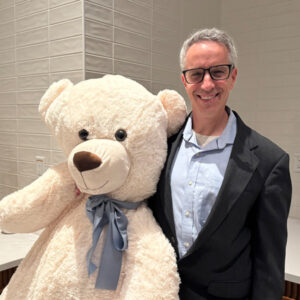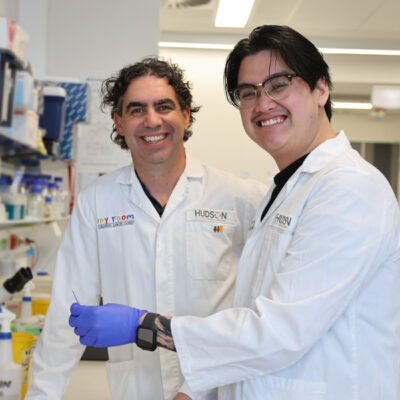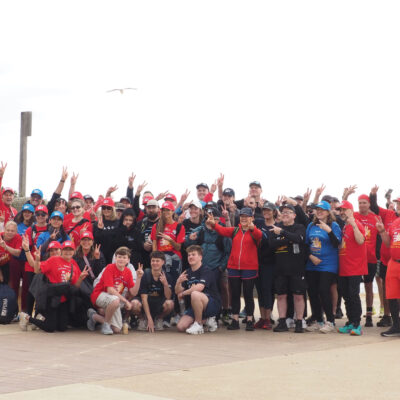Can antibodies hold the key to curing paediatric glioma?
By Rob Clancy, staff writer. Reviewed by Professor Ron Firestein

An antibody-based approach to tackling paediatric glioma has attracted major funding for researchers at Hudson Institute of Medical Research.
Paediatric glioma is a type of brain or spinal cord tumour that arises from glial cells — the supportive cells surrounding neurons. It’s one of the most common central nervous system (CNS) tumours in children, and can vary widely in severity, location, and treatment options.
Head of Hudson Institute’s Centre for Cancer Research, Professor Ron Firestein and his team have received a 2-year infrastructure grant from the Lindonlight Collective to establish new paediatric brain cancer models from patients, and develop a testing platform for antibody-based therapeutics.
This $600K USD (approximately $900K AUD) funding will allow the creation of a living biobank for childhood brain cancer, which will be used for testing new types of antibody-based treatments.
Game changer in paediatric glioma research
Prof Firestein says it could be a game changer in the treatment of this childhood cancer.
“Paediatric gliomas represent a significant clinical challenge due to their limited therapeutic options, high heterogeneity, and resistance to conventional treatments,” he said.
“Existing approaches often result in serious long-term side-effects, and that underscores the urgent need for precision-targeted therapies that enhance outcomes while minimising toxicity in developing tissues.”
Lindonlight Collective provides foundational funding that allows the orchestration of high-risk, high-reward scientific projects, and the development of research-enabling infrastructure.
Lindonlight has identified several areas in the paediatric low- and high- grade glioma space with significant scientific knowledge gaps that we believe present productive opportunities for both research programs and drug discovery efforts.
New treatment targets for paediatric glioma
Prof Firestein and his team aim to use AI technology to mine the extensive datasets from Hudson Institute’s Childhood Cancer Model Atlas (CCMA), and identify new cell surface targets.
These targets can be harnessed to develop antibody-drug conjugates (ADCs), an exciting form of precision medicine that is akin to delivering a precision bomb that can home in on a cancer cell.
“ADCs are like a precision missile that consists of two parts – an antibody directed to the cancer cell, and a chemotherapy that is attached to it. In this way, we deliver the chemotherapy right to the cancer cell while sparing normal tissue.“ Prof Firestein said.
The CCMA is the world’s largest single-site collection of high-risk paediatric cancer cell lines, containing more than 500 cancer cell models and more than 50TB of associated data. This unique and open-source repository was established through the collaboration of nearly 50 leading cancer research institutes, universities, and academic medical centres worldwide.
This research was supported by | Grant: Lindonlight glioma research grant Title: ”A Proteomic Framework for ADC Development and Repurposing in Pediatric Glioma”
In this article
About Hudson Institute
Hudson Institute’ s research programs deliver in three areas of medical need – inflammation, cancer, women’s and newborn health. More
Hudson News
Get the inside view on discoveries and patient stories
“Thank you Hudson Institute researchers. Your work brings such hope to all women with ovarian cancer knowing that potentially women in the future won't have to go through what we have!”






